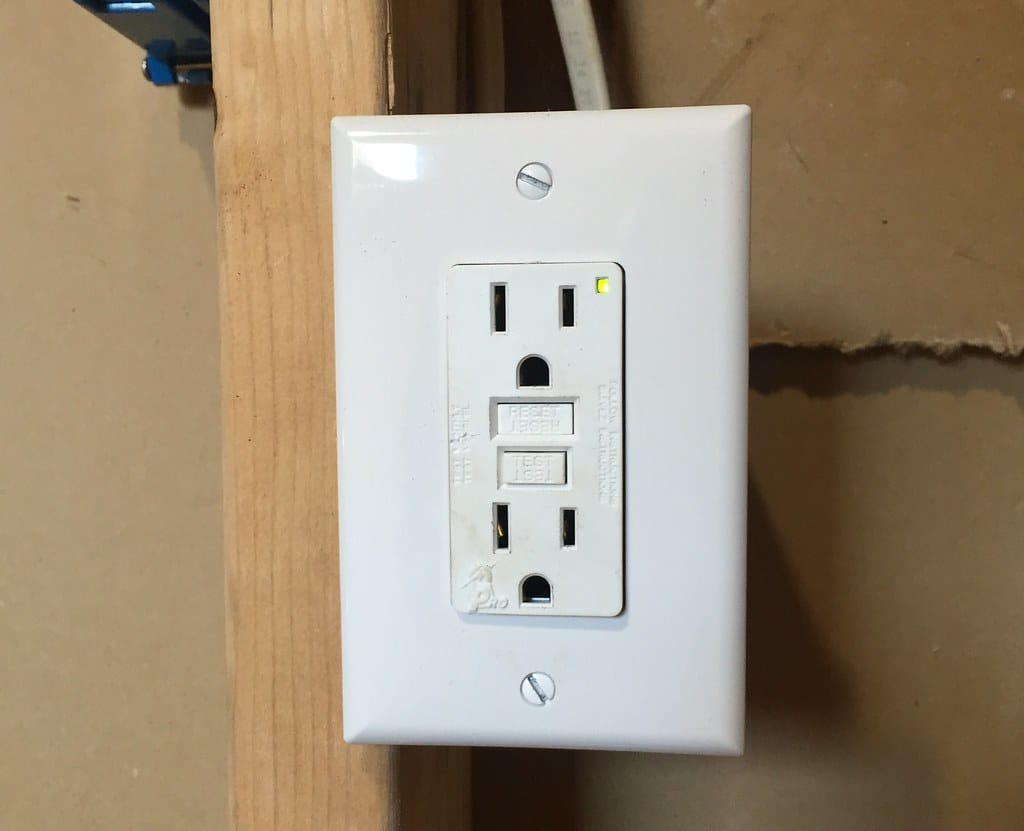Ground Fault Circuit Interrupter (GFCI) outlets are one of the most important safety features in any modern electrical system. Whether you’re upgrading your home or troubleshooting an issue, understanding how to wire a GFCI outlet isn’t just handy, it can help prevent serious injuries or electrical fires.
At Old Town Electric, we get a lot of questions from Sacramento homeowners about these outlets. So we created this quick, plain-English guide to demystify the process. Whether you’re a DIY enthusiast or just want to understand what your electrician is doing, this guide is for you.
What’s a GFCI Outlet and Why Does It Matter?
Here’s the thing, GFCI outlets aren’t just fancy plugs. They’re lifesavers.
Unlike standard outlets, a GFCI outlet monitors the flow of electricity and quickly shuts off power if it detects even a slight imbalance, like when electricity is leaking through a person who’s accidentally become part of the circuit. That shutoff can happen in 1/40 of a second.
Where are GFCI outlets required?
Anywhere moisture is involved:
- Bathrooms
- Kitchens
- Garages
- Outdoor receptacles
- Laundry rooms
- Basements
Basically, if there’s water nearby, a GFCI outlet should be there.
How GFCI Outlets Work in Simple Terms
Think of your electrical system like a highway. Electricity flows from the power source (LINE) to the devices (LOAD). A GFCI monitors this flow. If power leaves the outlet but doesn’t return correctly, it slams on the brakes and cuts power.
It doesn’t care how much electricity is being used, it only cares that what goes out comes back the same way.
That’s why these outlets are so effective at preventing shocks. They react to current as low as 4–6 milliamps. That’s tiny. Enough to stop your heart, but not trip a traditional breaker.
Before You Start: What You’ll Need
If you’re wiring a GFCI outlet yourself, you’ll need a few basics:
- New GFCI outlet (15 or 20 amp, depending on your circuit)
- Screwdriver (flat and Phillips)
- Wire stripper/cutter
- Voltage tester
- Electrical tape
- Wire nuts (if necessary)
- A healthy respect for electricity
Important: Always shut off power at the breaker box before working on any wiring. Test the outlet to be sure it’s off. Electricity doesn’t care if you’re “just checking something.”
GFCI Outlet Wiring: Step-by-Step
This guide assumes you’re replacing a standard outlet with a GFCI.
1. Identify LINE vs. LOAD Wires
Turn the power off. Remove the old outlet and gently pull the wires out of the box.
You’ll usually see:
- One black (hot) wire
- One white (neutral) wire
- A bare or green ground wire
- Possibly a second set of black/white wires (these may be LOAD)
Use a voltage tester with the power back on briefly to identify which wires are “hot.” Mark those as LINE. Turn the power off again before proceeding.
Pro Tip from Old Town Electric: Never guess which wire is LINE vs. LOAD. A reversed connection will result in an outlet that “works” but provides no protection.
2. Connect the LINE Wires
Every GFCI outlet is labeled. Connect the LINE hot (black) wire to the brass screw labeled LINE. The LINE neutral (white) wire connects to the silver screw on the same side.
Tighten the screws snugly, but don’t overdo it.
3. (Optional) Connect the LOAD Wires
If the existing box has additional wires leading to another outlet downstream, these can be connected to the LOAD terminals.
This will extend GFCI protection to other outlets on the same branch.
Be careful, mixing up LOAD and LINE is the most common DIY mistake.
4. Ground It
Attach the bare or green ground wire to the green screw on the outlet.
If your metal box is grounded, you can also connect to the box itself.
5. Finish the Job
- Gently push the wires back into the box
- Secure the GFCI outlet with screws
- Attach the cover plate
- Turn the power back on
- Press RESET on the GFCI outlet
Now test it using the TEST button. It should trip (cut power). Hit RESET again, and you’re good.
Troubleshooting: What If It Doesn’t Work?
Sometimes, even when it looks like you did everything right, the outlet doesn’t reset or provide power.
Here’s a quick checklist:
- Wires reversed? Double-check that LINE and LOAD aren’t swapped
- Loose connections? Make sure all terminals are tight
- Damaged outlet? It happens, try a new GFCI
- Downstream issue? Another outlet on the same LOAD side could be faulty
Still stuck? Don’t guess. Call a licensed electrician, yes, like us at Old Town Electric.
When to Call a Pro Instead
GFCI wiring is relatively straightforward if the box only has one set of wires. But once you start dealing with multiple branches, older wiring, aluminum wiring, or box crowding, it gets tricky fast.
Here’s when we recommend calling in a pro:
- You see more than two hot/neutral wires in the box
- You’re unsure which wires are which
- You’re working with aluminum wiring (this requires special connectors)
- The outlet is on a shared neutral circuit
- There’s no ground wire in sight
- You want the peace of mind of an inspection-compliant job
At Old Town Electric, we’re licensed, insured, and experienced in Sacramento-area homes, from historic Victorians to brand-new builds.
Common GFCI Outlet Questions
Let’s cover a few questions we get regularly:
Can I install a GFCI outlet on a two-wire (no ground) system?
Yes, but the outlet must be labeled “No Equipment Ground,” and it won’t protect appliances that require grounding.
Do GFCI outlets wear out?
Yes. Like any electrical device, they degrade over time, usually 10 years. Test them monthly to be safe.
Can one GFCI outlet protect multiple outlets?
Yes, if the downstream outlets are connected to the LOAD terminals. But this only protects that branch, not the whole circuit.
Quick Reference: GFCI Wiring Do’s & Don’ts
Here’s a simple table to help you stay on track:
| Do | Don’t |
|---|---|
| Use a voltage tester | Guess which wire is which |
| Label LINE and LOAD clearly | Connect LOAD wires to LINE terminals |
| Check for ground connection | Assume box grounding is sufficient |
| Test after installation | Skip the reset/test buttons |
| Call a pro if unsure | Wing it and hope for the best |
Keep It Safe and Code-Compliant
Wiring a GFCI outlet is one of those electrical tasks that looks simple, and it can be. But only if you’re careful, methodical, and know what to look out for.
If you’re confident in your wiring skills, go ahead. If not, don’t risk it.
Old Town Electric has been wiring GFCIs and keeping Sacramento homes safe for years. We know the code. We know the risks. And we do the job right, the first time.
Need help with an install of GFCI outlet or inspection? We’d be happy to take a look.



